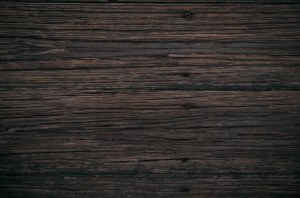When it comes to flooring, there are a variety of different options to choose from. Waterproof flooring is a great option for bathrooms and kitchens with a high risk of water damage.
Typically made from either laminate or vinyl, or a combination of the two, it’s not really known for being high quality. It can get the job done, but there are reasons why you are often better off going with something else. In this article, we will go over both the positives and negatives of waterproof flooring and if it’s something you should be using in your home or business.
What is Waterproof Flooring?
As previously mentioned, there are a few different types of materials that it can be made from, but they’re all constructed similarly. They’re a type of multi-layered synthetic flooring that usually comes in the form of planks or tiles. Due to the floor being synthetic, the design on the top doesn’t have to resemble wood at all. Anything can be printed on them. This print layer has a wear layer over it that prevents the design from being worn off and provides most of the actual waterproofing.
Positives of Waterproof Flooring
There are a few different positives that are worth mentioning about waterproof flooring.
Resilience

source: unsplash
This type of flooring can be very resilient, at least in the medium term. As long as you’re regularly sweeping, using a mop when needed, and maybe the occasional cleaning solution to return the shine to the boards, you will find that waterproof flooring is rather durable.
Comfortability
To some, the flooring is more comfortable than stone or hardwood, having a more padded feeling to the foot thanks to its construction usually including a layer of foam or felt. This same construction also allows the floors to maintain a more even temperature throughout the year. It can also be easier to stand on for long periods of time. You won’t be freezing your feet if you decide to walk to the kitchen in the middle of the night in the winter.
Affordability
It is surprising how affordable and easy it is to work with. In most cases, it’s the cheaper option to go for as opposed to traditional hardwood. You can scale your costs to your needs, buying anything from simple peel-and-stick squares, all the way up to high-quality luxury vinyl tile (LVT) that’s almost indistinguishable from what it’s imitating. If you’ve never installed flooring before, laying down vinyl flooring and the like can be much easier than installing wooden planks.
Negatives
Unfortunately, waterproof flooring does have its disadvantages.
Resilience (Again)
The previously mentioned resilience of waterproof flooring is a double-edged sword. While it indeed does last a good number of years, it has a rigid lifespan that cannot be extended by much.
The condition of it can really only go down until eventually it completely deteriorates, requiring the need for you to replace your floors entirely. Unlike wood, you can’t do anything like sanding down a scratch or making a new layer, as you would be cutting past the wear layer and destroying the design underneath it, as well as exposing it to the elements and defeating the waterproof aspect of it.
How long waterproof flooring lasts can vary wildly depending on a good number of factors. It depends on how well it was installed in the first place, the thickness of the wear layer, how regularly used it is, and the quality of the vinyl in the first place. This can be anywhere from 5 to 25 years. In a home with a lot of activity, expect to be on the lower end of this range. Remember that if you damage the flooring, you need to replace it. It’s unlikely that you’re going to be able to completely repair anything more than simple scratches without making it worse.
Resale Value

source: unsplash
This leads into the next point, that there is next to no resell value to be had for reused vinyl, let alone for the value of the house itself. Unlike hardwood and tile to a point, once vinyl is past its life span, that’s it. It needs to be thrown out. As a result, you may find that it may even decrease the value of your home by having it installed.
Buying more expensive vinyl with thicker layers and better materials can help, but at a certain point the cost benefits just begin to wear out and you’d be better off just buying stone flooring or the like.
Environmental Impact
Another complication with waterproof flooring is the negative environmental impact the manufacturing process has. They use toxic chemicals that may even stick around in the plastic afterward. These can then create harmful gases right into your living space. It should be noted that the companies manufacturing the flooring are aware of this and have taken many steps to reduce the number of toxic chemicals.
If you decide to get waterproof flooring, you will want to make sure you get ones that have low concentrations of these gasses, though none of them will be completely free of them. You will want to look at the FloorScore certification to see what flooring has the lowest VOC, or Volatile 5 Organic Compounds.
Subfloor Complication
Subfloors are another issue to consider. In an ideal scenario, vinyl can be installed right over the subfloor without any need to modify or remove anything. However, this can often be difficult, and a subfloor that is more aged may need some repairs and other extra maintenance for it to support the vinyl’s adhesive.
Care should be taken for the subfloor to be completely free of any loose particles over where the adhesive will go, as these can easily weaken the glue. Even worse, you will likely see those particles straight through the vinyl due to how thin and flexible it is.
Final Thoughts
Waterproof flooring certainly has its uses. It is cheap, easy to install, can come in just about any shape, color, and design, not to mention its namesake of being waterproof. That said, there are quite a number of tradeoffs that should give you a pause. It often doesn’t last as long as you’d want it to, there’s no easy way of repairing it once damaged to any significant degree, and it generally doesn’t offer the same value to your home that something like stone or wood does. You may find that a different type of flooring would give you a lot less of a headache.
If you’re in Colorado and in need of anything to do with hardwood floors, we are here for you.
Contact us here to get started.